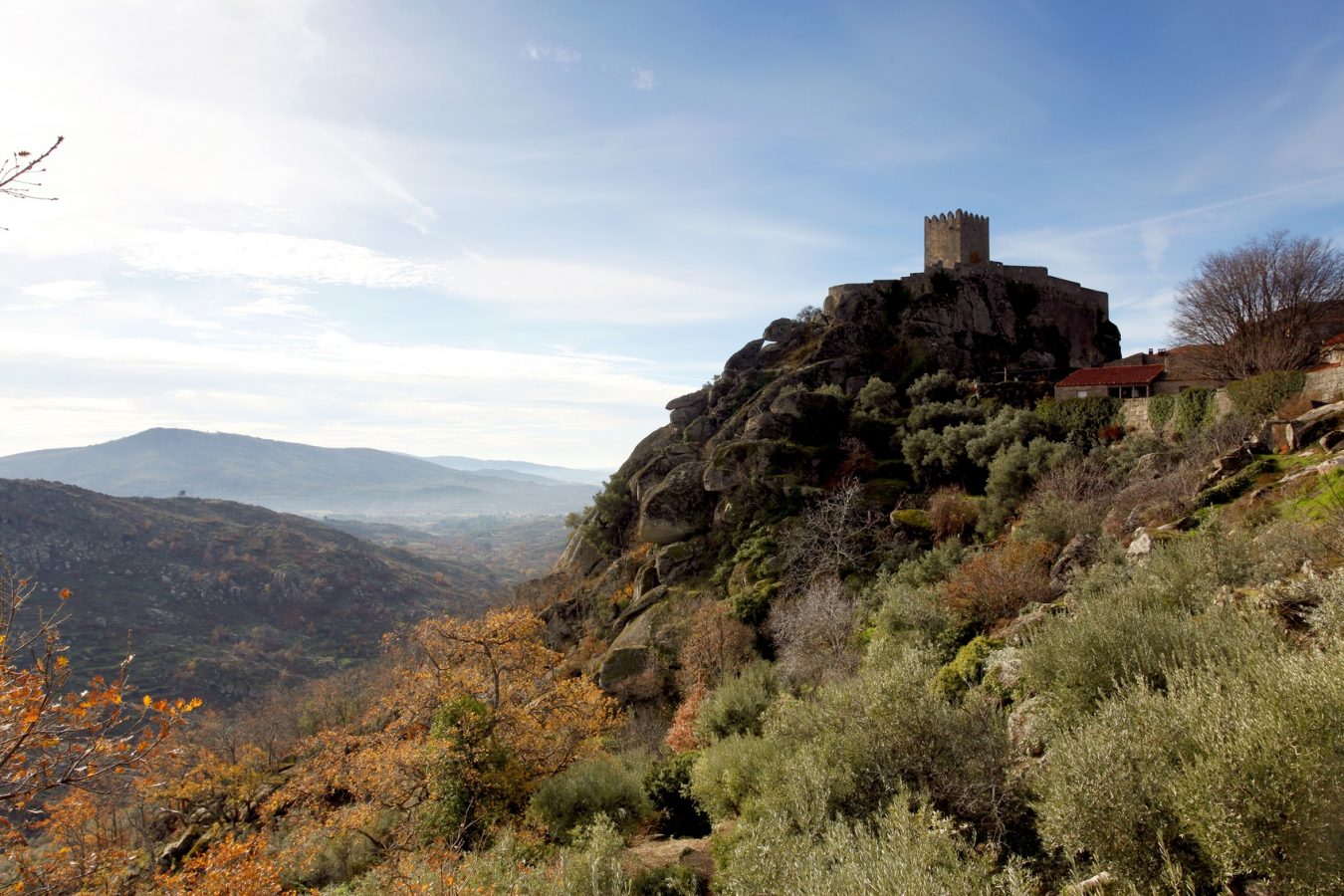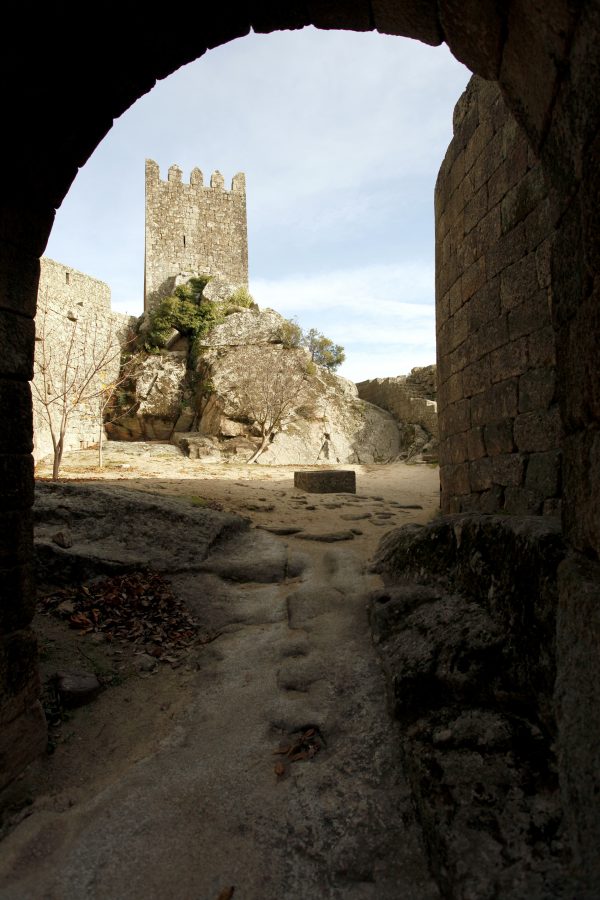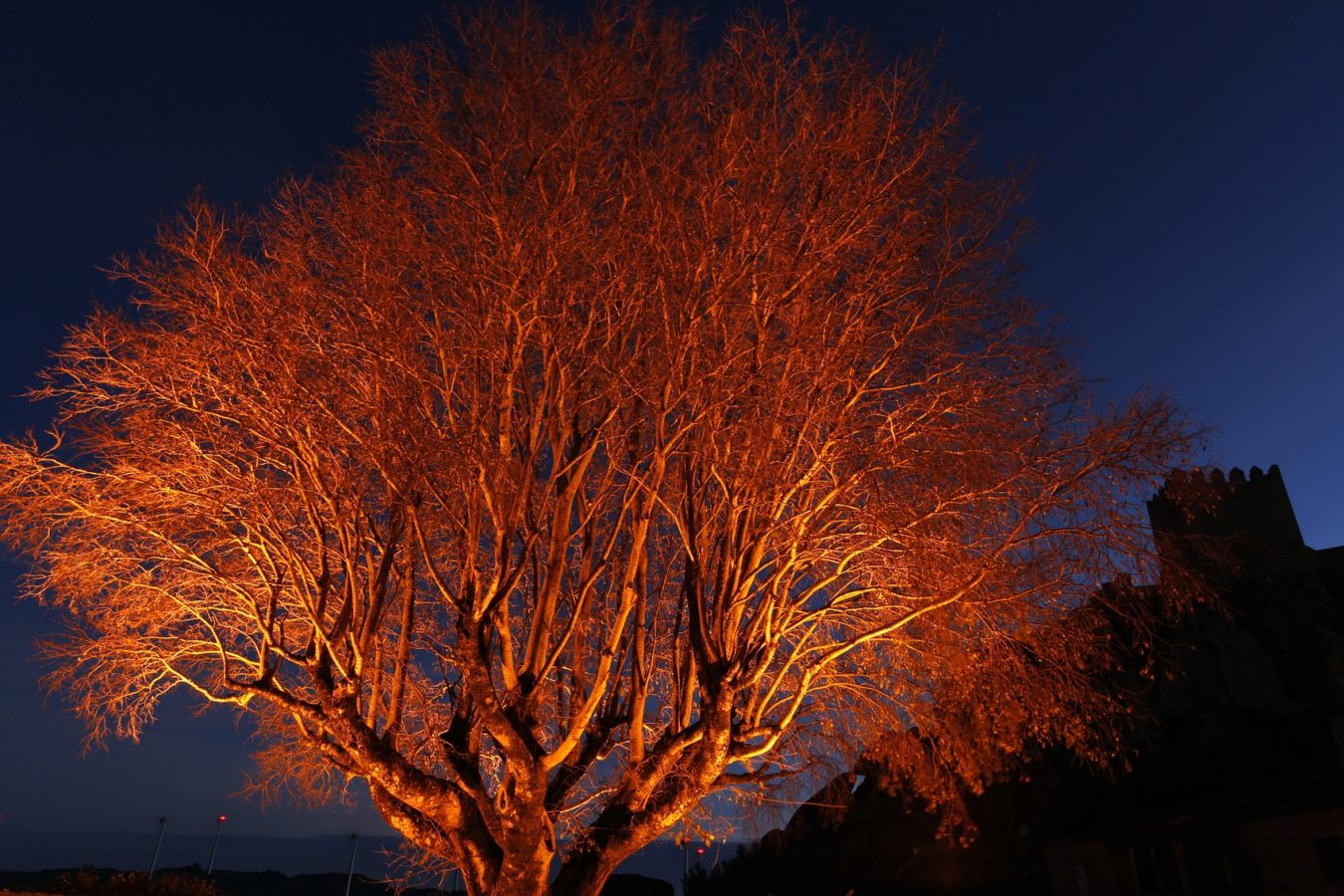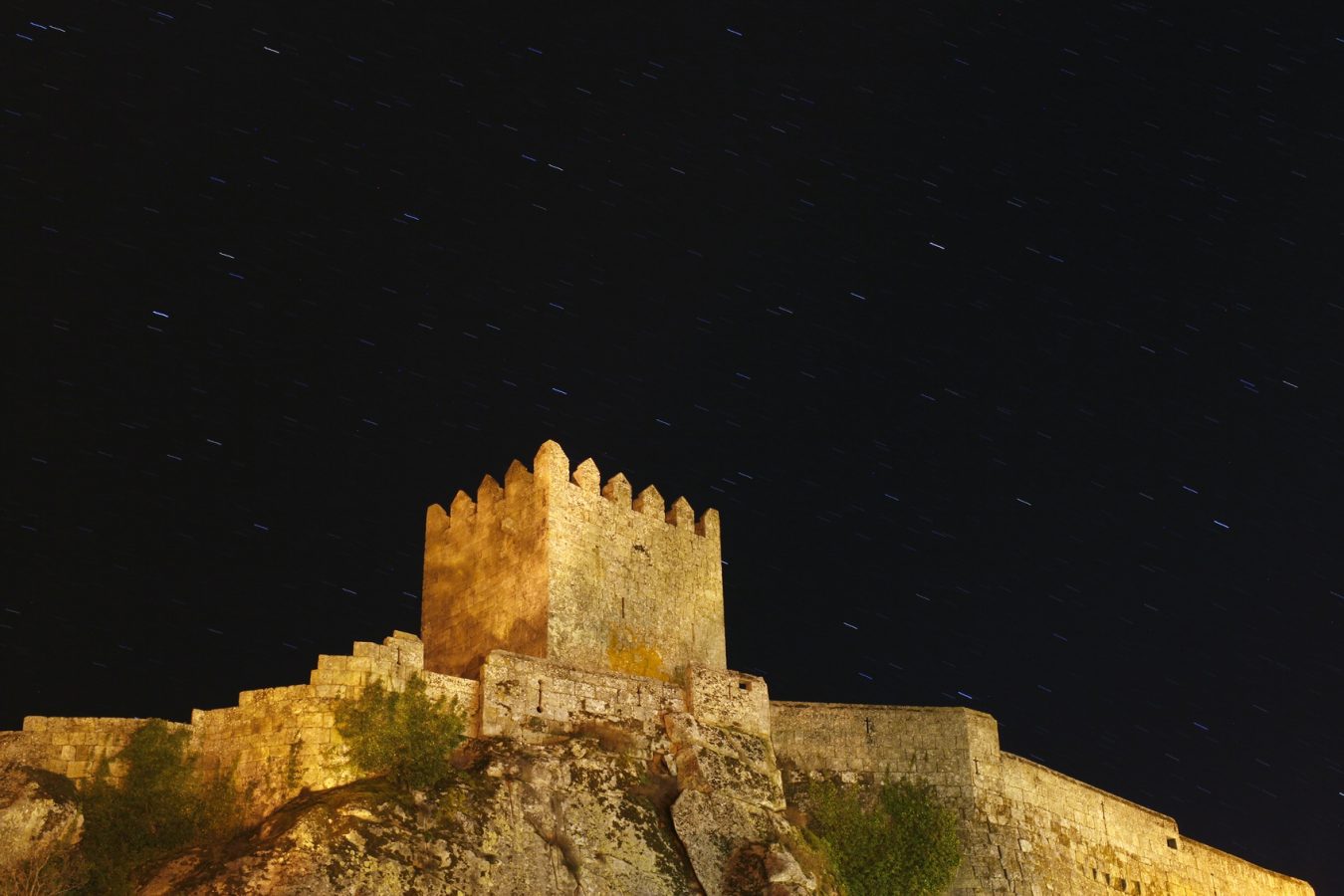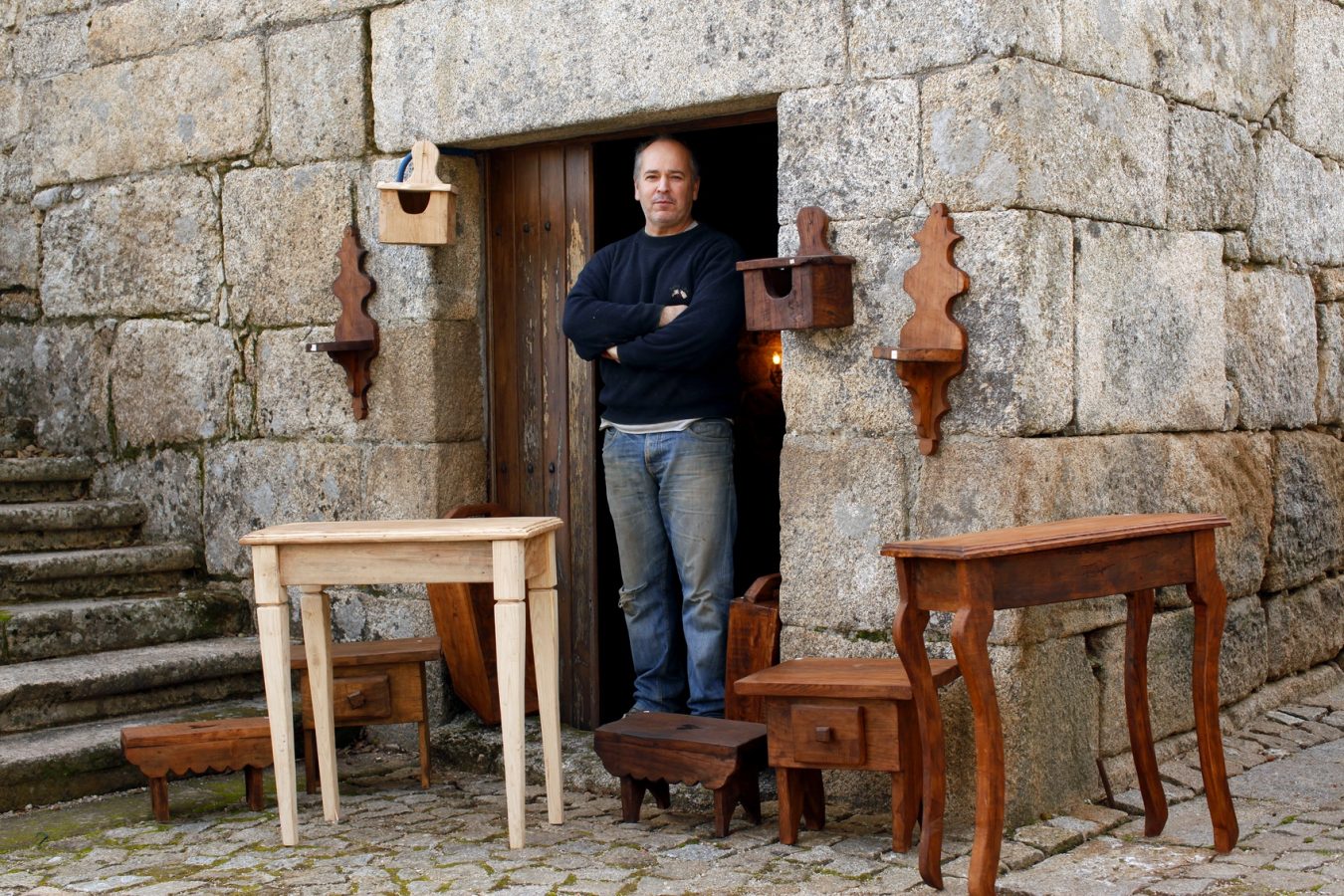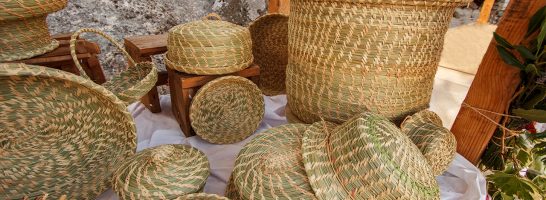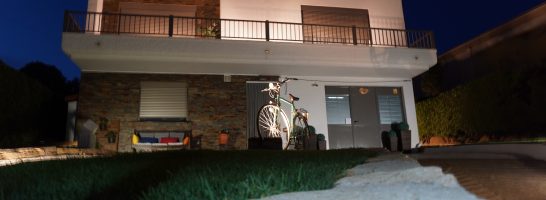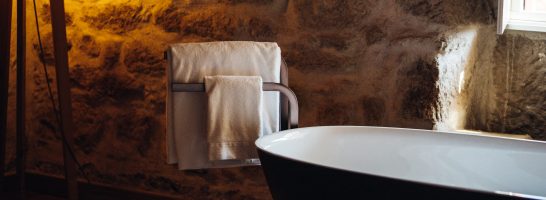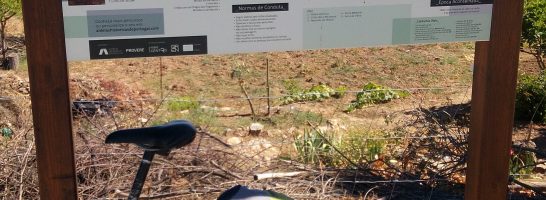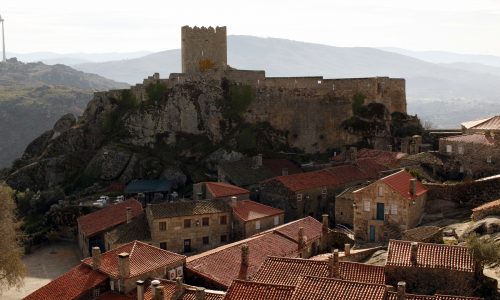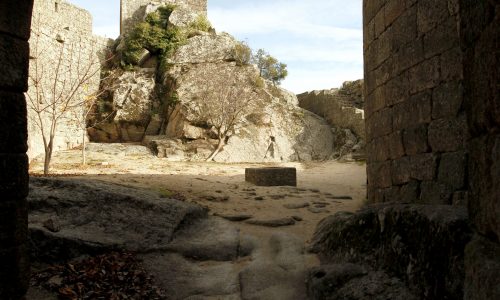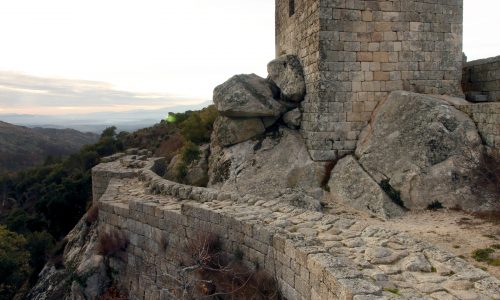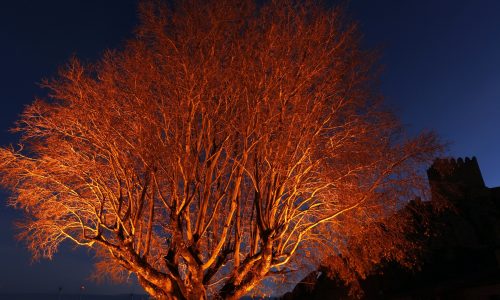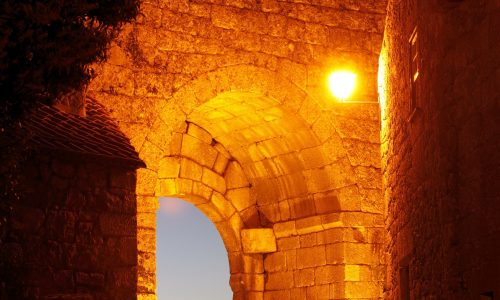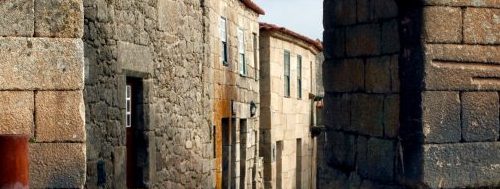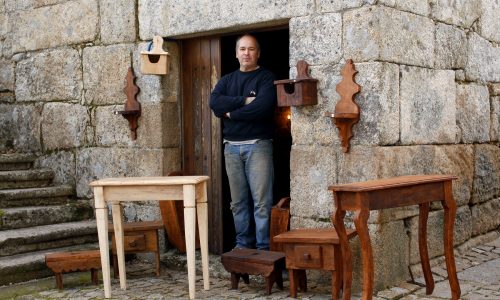Sortelha
Sortelha is one of the most beautiful and ancient Portuguese towns, having maintained its urban and architectural appearance unchanged from the Renaissance to the present day. Visiting the streets and alleys, enclosed by a defensive wall, and guarded by a towering castle from the 13th century, allows visitors to travel to distant centuries, walk among the medieval tombs, next to the Manueline pillory and in front of the Renaissance church.
History
Our history your time
A border town established during medieval times, with a charter granted in 1228, Sortelha only lost this status in the 19th century with the administrative reorganisation carried out by the liberal state. Referred to in the oldest documentation as Pena Sortelha, its rock castle was built at the beginning of the 13th century, forming a small citadel of 670 m2, accessible from the outside through a small opening facing south, known as the “Door of Betrayal”. The castle was reinforced by an independent Keep, common in the oldest Romanesque castles. The construction of the wall lines which surrounded the town goes back to the mid-13th century, that is, before the castle’s construction, erected between the ravine and cliffs, without needing towers. The “chemin de ronde” (walkway) was accessed by stairs built with protruding slabs, almost all of them operating in a precarious direction (to the left). As is common in medieval castles, there are few gates in the Sortelha walls, as these were the weakest points in its defence. To the east we have the Town Gate, rebuilt at a later time on the interior elevation, on which numerous initials have been carved in the masonry. They are the stonemasons’ marks, very common during the 13th and 14th centuries. At that time, masons were paid by the piece, not by the day, and these marks were a way of accounting for their work. On the opposite side of the wall opens the New Gate, also called the Sun or Covilhã Gate. And a few meters to the north is the so-called False Gate, which it is not, because false gates led to dead ends. Two standard measures: the cubit (67 cm/3 hands) and the pole (110 cm/5 hands) were carved into the right side of the New Gate’s frame. They were used to standardise the measurements of the cloths sold at the fair. In the 14th century the Beam Tower was built, on the western side of the wall, to better protect the existing Gates (New and False) and control the land in the direction of Covilhã. Its name is derived from the beams that burned at its top to communicate with the other castles through smoke signals. The houses we are able to visit today inside the town walls are some of the most well-preserved in our country and demonstrate the characteristics of 16th century Sortelha houses and alleys. During that century, many of the houses were expanded by adding another floor, some with door and window frames with bevelled angles, while others applied lintels decorated with an ogee (pointed arch, formed by two convex and two concave curves), such as the one from one of the windows at the beginning of Rua da Fonte. Also common in Sortelha, are lateral corbels, which would serve to place flowerpots. A main street joins both the east and west gates, called Rua Direita (“Right”), which is not on the right and is directly between both exits. Some of these houses were expanded during the 16th and 17th centuries with the construction of exterior staircases, some with porches, which lead to a second floor, contrasting with medieval dwellings, which primarily consisted of one floor. If you enter through the Town Gate, you will see one of these porched houses, House One, facing Corro Square. In this first square, a centenary nettle tree (Celtis australis) greets the visitor, while at the end of the square there is a medieval diving fountain, which is currently closed. Further up, the Town Hall is a sober construction from the 16th century, located in a square, granting access to the Castle and where, during the same century, the pillory was built. If you cross Sortelha and leave through the New Gate, you will see the vestiges of the medieval cobblestone walkway and the ruins of the Church of Mercy. Also known as the Church of Santa Rita or São João, it was built at the beginning of the 14th century. The church has an extensive necropolis (cemetery) associated with it, from which some of the 133 identified rock graves are visible. Nearby is the chapel of Santiago, built in the 16th century, originally with a door leading to the path, but currently accessible only through the cemetery. Among the simple houses of traditional architecture, some houses stand out because more elaborate details have been added to their façade, corresponding to the unique social identity of their owner, among them: the Scribe’s House, the Parish Priest’s House, the Governor’s House and the Judge’s House.
What to see
Where sleep

Charme Lusitano
What to do

Adventure and nature trips
We are a registered tour operating company and we base our activity on the values of legal compliance, nature protection and sustainability. We operate according to the Portuguese legislation and we hold a special accreditation from the Institute of Nature Conservation and Forests allowing us to drive inside Nature Parks and other protected areas (where permitted)- We are members of the Natural.pt brand (www.natural.pt), reserved for companies who adhere to the programme. Following the recent pandemic we got our Clean & Safe seal from the Tourism Authority signifying our compliance with the official health requirements for the prevention and control of infections. Our trips are much more than just going from A to B and we distinguish ourselves for having a higher purpose: the knowledge and promotion of the historical, cultural and environmental heritage of Portugal, so that in the end our guests will have lots of stories to tell. In each new journey through some of the most beautiful and remotest places in mainland Portugal, we discover a unique, authentic and truly surprising country with a sense of adventure and discovery that enriches us as human beings. Our offer is based on a personalised service with tailor-made trips meeting the personal interests of our guests. We are constantly exploring and spending countless days on the ground in contact with the local people and organisations in search for the best places of interest and the best routes. As a result of this research, we have acquired a deep knowledge of the whole country which allows us to give our guests a renewed level of novelty and differentiation in each event. During our events we privilege the contact with nature in a legal and responsible manner, with the aim to reduce the impact of our passage, by working with official entities and other environmental organisations. Every year we plant many autoctonous trees in an effort to make Dream Overland a carbon-neutral company, an action that our customers can support and partake in. With our trips we contribute to the social cohesion and economic sustainability of local communities, through the knowledge and promotion of their traditions, handicrafts, produce and local heritage.
